by Coffee Kevin | Apr 13, 2016 |
 Bonavita practically owns what might have once been called “The Chevy” market. This meant, again at one time, a good quality, well designed product that was easy to use and maintain. It had no stunning features, but was priced for everyman. I suppose in automobiles Chevy has been replaced by Toyota, or recently, Hyundai.
Bonavita practically owns what might have once been called “The Chevy” market. This meant, again at one time, a good quality, well designed product that was easy to use and maintain. It had no stunning features, but was priced for everyman. I suppose in automobiles Chevy has been replaced by Toyota, or recently, Hyundai.
Bonavita hit the marketplace with a Melitta-designed 8 cup coffee maker. It was known as a lower-priced Technivorm but that’s really not the truth. It was a lower-priced Technivorm that increased the water spray width to better match the grounds basket width. Generation 2 Bonavita brewers (no longer designed by Melitta) went further by adding pre-infusion features and switched to flat bottom filters, all in the pursuit of better cup quality. Bonavita gets good marks in the consumer press, including this blog.
Recently, Bonavita brought out this model, which is for the growing medium batch market. Households with two coffee drinkers don’t need eight or ten cups each time they brew. Consumers have realized that fresh is best, and in my home, I brew a couple of cups for each of us each morning. If we are home and wish a repeat dose after lunch or later, we simply repeat the process. It reduces waste too. I pay roughly $20 per pound for specialty beans and, believe me, I cringe whenever I see leftover coffee go down the drain.
The Bonavita 5-cup returns to their Melitta roots with the use of a V-shaped cone filter. They used a number 4 filter, which Bonavita, ever the practical company determined was the easiest to find, plus it gives the coffee plenty of room to expand, which truly fresh coffee does in the first few minutes of brewing. I assume a V-shape was chosen to increase saturation and slow brewing slightly. With an 8-cup brewer, there’s a concern about the brewing happening quickly enough, so that the grounds are not over-extracted. With the smaller batch of a 5-cup, the opposite is true. All drip machines are a carefully thought-out process where grind, volume and time are matched to create the ideal extraction. So, whenever I test a new different-size batch coffee maker, even from a manufacturer of another machine, I spend a fair amount of time playing with the variables I as consumer have over the process.
For instance, I initially tried a grind similar to what the Bonavita 8-cup uses. I found this was the most important thing to tweak. This is not specific to this brewer, but the shorter the contact time, the precise grind needs to be, in my experience. I played with typical cone Melitta-style grinds and finally ended up using a somewhat coarser grind. Not as coarse as Chemex, but definitely coarser than I’d use for most cone filter machines. I also settled on 42 grams of coffee to deliver a cup of coffee I could really enjoy.
The Bonavita 5-cup also has a pre-infusion stage which is easy to implement. You simply hold the on button in place for a few seconds. Once it blinks, simply release it and press it on again. Every time you start it the pre-infusion stage will work until you physically unplug it. This stage is important to anyone who uses coffee two weeks from roast, which is how I do it and I assume you do too. It’s technically known as “fresh coffee”. Of course I’m also assuming we’re all fresh grinding it seconds before we brew.
Consistent with the whole 1960 Chevy concept Bonavita doesn’t waste time with metal filters, on-board water filters, alarm clocks or other non-essential frills.
How does it test? I measured the temperature right at the hot water exit holes. It is slightly lower in temperature than I expected. It peaks at near 200°F, 199°F to be exact. The first minute was spent climbing “to altitude”. While not seeming ideal, it probably matches many slow brew methods in practice. Most people who use a Chemex may not measure their brewer’s temperature, but sub-200°F temperatures are quite common in practice. It doesn’t really bother me, but it did bother the SCAA, who held to their exact temperature specs their certification program demands.
A non-certification test, but one I consider critical and a hallmark of every other Bonavita brewer I’ve yet tested is the water dispersion, which is truly excellent with this machine. Dispersion is geek-speak to describe what happens when a skilled barista constantly surveys the grounds in your Chemex and makes sure the water covers the grounds, ensuring there are no dry spots and that all the grounds receive equal saturation. In practical terms this means you get strong flavor that is less bitter, than it is if you concentrate the water too much on one particular spot.
The contact time between the hot water and the grounds is slightly under 5 minutes. This is at the short end of the SCAA brewing specification of 4-6 minutes for drip. Again, I could get all sniffly about it, but I found that it was not a problem. If I were to guess I’d say the aforementioned water saturation is so efficient it accomplishes the right amount of extraction in less time.
A note about temperatures: I think the range of 196° to 205°F called for in the SCAA standards (themselves adaptation of the original Pan American Coffee guidelines developed many years ago) are reasonable. I agree we need to start somewhere, but there’s also a big difference between a brewer that misses the mark by a degree or two, while still meeting other criteria versus ones that don’t seem to even try, frankly, most of the ones out there made by the largest small appliance makers.
Taste tests:
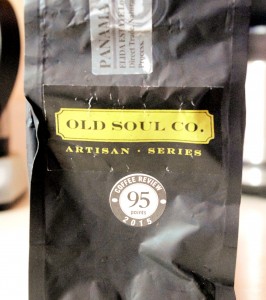

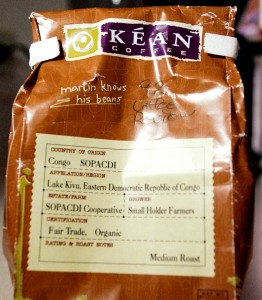
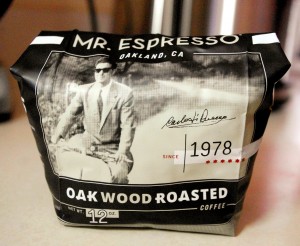
Test 1 – I made a batch using Groundwork Coffee’s Organic Rwanda, they’d been kind enough to share with me at CoffeeCon LA. I already enjoyed it in my Bonavita BV1900S, but I made it improperly in this first outing. Although the coffee had the same notes, everything was out of balance, and auspicious beginning. I realized I’d used 44 grams (still not sure why) and a medium coarse grind as I would in an 8-cup flat bottom brewer. I’m only reporting it because I can’t say enough about how important it is to use the right recipe.
Test 2 – Next, I was able to snare Old Soul Coffee’s Panama Elida Estate Lot #13, which was rated 95 by Ken Davids in The Coffee Review. What a fruit bomb! Fortunately I backed off the recipe to just about 42 grams. What a difference! I strongly recommend this coffee to anyone who’s convinced that the recent Panama Geisha invasion is only attributed to the Geisha bean. While I’m a fan of Geishas, this coffee proves a Panama coffee can be stellar and not be Geisha. This one isn’t a Geisha, but it’s delicious.
Test 3 – Kean Coffee’s Congo Lake Kivu is a rarity for me. I’ve never before had a Congo coffee. I guess I’ve been missing a lot. This coffee, selected and roasted by Martin Diedrich, is not only a wonderful bean, but Martin is not afraid to roast it just a shade darker. It suits this brewer perfectly. I had trouble trying anything else after I’d tasted this.
Test 4 – Finally, I received a Sumatra Mandheling from Mr. Espresso in Oakland. John DiRiuocco uses a wood fired roaster. I know nothing professionally about roasting, but I do know how heat is applied makes a difference. That and a honey roasted Sumatra made for an interesting sample. I’d brewed tests of this coffee (and compared them to an Oren’s Daily Roast Mandheling I also had in stock) and discovered I preferred it brewed near the 195°F mark, so it was a good fit for this brewer. I used 42 grams medium finely (#12 grind on my Baratza Encore grinder). I felt I’d finally arrived at the perfect intersection of coffee bean, recipe and grind setting, the holy trinity of good automatic drip brewing.
Previous review note: I make it a policy never to read other reviews while mine is in progress. I had seen this one however and I noticed CNET’s reviewer (Brian Bennett) noted a bitter taste. I’m not sure what the difference was, but I was unable to produce a bitter coffee during any testing of this machine, which was over a one month test period. Two test results I tested and reported that could cause bitterness, temperature and contact time, are both at the low end in this machine, so that are unlikely (ne impossible) to produce this result. Other factors could be his choice of beans, which he did not identify. I only test using lighter (Third Wave style) high end specialty beans, in this case two of our samples were brewed using beans rated in the mid 90s in the Coffee Review. No bitterness whatsoever. I’m unaware of other factors that would result in bitterness. Maybe he needs to check his water supply. If Mr Bennett wants to contact me, reveals his bean choices and discuss other possible causes, I’d be happy to share them. I’m befuddled by his claim. In any case I didn’t find cause to be concerned and I suggest it’s unlikely under your conditions.
Conclusion: I’m getting spoiled lately. Between my manual drip methods, and some ultra-sophisticated automatic drip brewers which feature multiple brewing temperatures, which is one reason I was able to simply match up a coffee to this one’s brewing temperature range. However, those machines are larger and costlier, both in base price and coffee to keep it going (think gas mileage). The Bonavita 5-cup makes four/five delicious cups of java. Consider that the smaller the batch size and brewing time, the more precise you must be in measuring your coffee grounds and grind. That said, I could easily live with this brewer. If you want a trouble-free, easy to use, no frills but high quality brewer to make fresh specialty coffee for you and a friend, the Bonavita BV1500S five cup is a good choice.
by Coffee Kevin | Nov 27, 2014 |
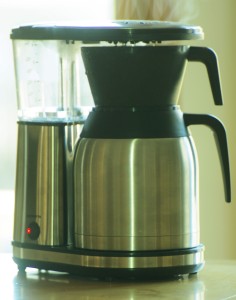
Several years ago, I was attending an SCAA event. Nancy Bloostein, of Oren’s Daily Roast nudged me and suggested I take a look at some new Melitta coffee makers. I ran (literally) over to see what appeared to be Technivorm knock-offs. They were labeled Melitta, but I was then told that they would appear on the marketplace soon under a new name, Bonavita. According to what I was told, Melitta licenses their nameplate to Hamilton Beach in the US. Therefore, although these were Melitta conceived and designed, no mention of Melitta would appear in the US market brewers.
Fast forward to 2014, Bonavita is now a treasured brand. What seems a simple proposition to make an excellent brewer priced to the average consumer, has long eluded most appliance brands. Even though it seems simple, apparently it is not. You need a smart design, one that gets the water almost-instantly hot, a spray heat that evenly disperses that hot water over the grounds, achieving even distribution, and gets the grounds thoroughly soaked, and gets all this done, start-to-finish, within 6 minutes.
So revolutionary was the Bonavita concept that it currently is the leading automatic drip coffeemaker. Bunn, Technivorm, Bodum, KitchenAid and Behmor all have fairly comparable brewers that compete, but somehow the Bonavita just seems to have an edge, when it comes to hitting the consumer sweet spot of price, performance, quality and ease. Remember if it isn’t easy, it isn’t automatic, is it?
So far, I’ve compared the Bonavita only to other automatic drip brewers. But as Third Wave Coffee has emerged, the bar has been lifted, as more consumers who use a Chemex, Hario or other manual brewer for their weekend or other special brews, want an automatic drip brewer to reach higher to match these inherently customized devices.
One interesting change: Bonavita has moved from the Melitta V-filter to the US-cupcake filter. Does this mean that Melitta no longer designs this brewer? Inquiring minds ponder this. Although I have found differences such as filter types to generally be outweighed by other factors, I philosophically agree with the reasoning that the cupcake filter spreads the grounds extraction task more evenly at the bottom, so I consider it a good (if shocking) move. I also applaud their resistance of the metal filter, which I consider overall inferior to paper in its ability to separate flavor compounds from grounds.
There are two things the Bonavita did not do as compared to manual drip. One is vary the brewing temperature. The other is match the intermittent pour that we use when we brew manually, which is especially important near the brew’s beginning when using fresh roasted coffee.
The new Bonavita offers only one brewing temperature, but they have gone out of their way to include a pre-infusion stage, which sprinkles ideally hot water over the grounds, then shuts down in order to allow a freshly-roasted, freshly-ground coffee to rise and fall appropriately, before continuously running hot water over the grounds.
So, how does it perform?
The new Bonavita handily meets every specification of an automatic drip coffeemaker, as did its predecessor. The brewing temperature is within the 196-205°F range. The brewing cycle (without pre infusion) is under 6 minutes. Pre-infusion adds around 30 seconds, as it should.
The ability to match intermittent brewing with your (or your barista’s) best efforts keeping pace with the water’s drip rate during brewing is not able to track as well as manual brewing, in my opinion the goal. Nor is it with the Behmor Brazen or any other yet-invented automatic brewer. What I can say, is I never had an overflow, no matter how fresh the grounds. I inserted a Chemex underneath the Bonavita, which is to be fair, not anything they suggest or offer to accommodate. The brew drip rate was simply too fast, even in the pre-infusion setting. But, this is more about how fast consumer expectations are rising, than any shortcoming on this brewer’s part.
What’s left? Well, the Behmor Brazen offers adjustable brewing temperatures and adjustable pre-infusion time settings. Will this matter to you? I cannot answer that, but I can say the Bonavita does a very, acceptable job with several coffees I’ve been using since it arrived one month ago.
Temple Roasters Panama Don Pepe Boquete Geisha is a light roasted delicate coffee that showed its full colors when brewed in the Bonavita. I was able to closely match what I could achieve in a Chemex.
Kean Coffee’s Nicaragua La Prometido is roasted slightly darker, or is it just the Diedrich roasting imprint? Not sure, but this stellar varietal comes through with its notes intact. This kind of roast is not for the timid (roaster that is). To catch it just before it starts to go caramel on us, is really a test of roasting skill. I was able to taste the full resolution of the coffee with the Bonavita.
Conclusion: The Bonavita took a good idea and made it better. There is not one thing I noted where I said, “Oh, I wish they hadn’t changed that”. Bravo!
by Coffee Kevin | Nov 12, 2012 |
We are living in a golden age of coffeemakers. Just a short while ago I honestly could not say this, but today I can and the biggest innovations are happening in automatic coffeemakers. It used to be the Technivorm and Bunn, and the industry didn’t understand the Bunn, so it was really just the one machine among the elite. Today there are several that meet high enough standards to motivate me to write a comparison to help make up your mind. Please read the in-depth reviews as they appear, but I wanted to get something out to clarify them side by side.
Here is the current A list:
• Technivorm
• Bonavita
• Behmor Brazen
• Bodum
• Bunn Phase Brew
Each of these has the following traits in common:
• Meets goal of brewing in under 6 minutes contact time. The Bunn and Behmor machines take longer from the time you press the button, but that’s because they’re designed to heat the entire water amount first, but none over extracts like so many automatic drip machines from other manufacturers.
• Brews at industry standard brewing temperature: 200° F.
• Gets the grounds properly wet.
Here is a profile of each, containing my observations for each machine.
TECHNIVORM KB741
The Technivorm is the original automatic drip machine champ. It is the oldest engineering design. It has a well-earned reputation for performance and longevity. It gets the water almost instantly hot and stays there ruler flat. I’ve got one that’s twenty years old. It is discolored but still performs. You could get one and call it a day. Its only weaknesses are price ($300) and a less-than-perfect showering system. It’s nit-picking but the Technivorm sometimes leaves a few dry grounds or with ultra fresh grounds, they tend to swell up and then the water drips through the center. Technivorm fans own them for years and don’t notice or care or find hacks to overcome it. Strengths: The Technivorm is the best-built coffeemaker I’ve ever tested. It does not have a single lowest-bidder part in its makeup. The one I recommend has a patented tube that ensures all the coffee is evenly distributed as it brews and it works. $279 glass carafe/$299 thermos
BONAVITA
The Bonavita is really designed by Melitta in Europe, but since they license their name to Hamilton Beach in the US, an American stage name needed to be created. It has been accused of being a Technivorm knockoff, but if it is, it’s a knockoff at half the price. In testing I found it does meet the industry temperature standard of 200°F +-5°F but it does so over a wider variance. Whether this matters to you or not is a matter of opinion, but no, it is not exactly the same. It does actually outperform the Technivorm when it comes to water saturation of the grounds. In this regard it is the best coffeemaker I’ve ever tested. Weaknesses: Build quality okay, but longevity is unproven. Strengths: Price and overall cup quality and ideal water distribution. $129/$149 glass carafe/thermos
BEHMOR BRAZEN
The Behmor wins the award as the most innovative coffeemaker of all. Invented by Joe Behm (Behmor Coffee Roaster) this one has some unique and first-ever features. Fresh coffee foams up when hot water hits the grounds, a big problem for all automatic drip machines. This rise and fall takes a minute or more. Chemex and other manual method users watch this and wait to start pouring the rest of the water over the grounds. It makes a big difference in taste. The grounds just extract better once they’re settled. The Brazen can be programmed to get the grounds initially wet, then wait between one and four minutes before running the rest of the water through. The Brazen also lets you choose the brewing temperature, even outside the recommended temperature range. As far as I know, this is a first. The Brazen has you enter your location’s altitude when you set it up (just once, and it’s easy). I know that’s a first. Setting the brewing temperature makes a profound difference; not subtle at all. Best of all, these settings are really easy to access. It’s a geek’s dream maker, but anyone can use it, it works out of the box or after setup, and temperature can be adjusted before each brew if you like. Definitely the choice for those who need absolute control and like to vary the taste for each coffee they try. $199 thermos only
BODUM BISTRO POUROVER 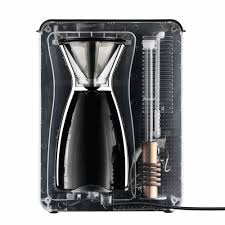
Bodum has long been associated with the French press, but they’ve done some other coffeemaker designs, including an electric vacuum maker. The Bodum Bistro is their first foray into the world of automatic drip. Rumor has it they simply sourced the same heating element as Technivorm. Not original, but a good choice. It has a see-through design that’s as sexy as any actresses’ Academy Awards frock (to me anyway). I’ll say it right now: It’s the best looking coffeemaker made on the planet. Weaknesses: It has a slightly tight brewing chamber. I found it can get messy with just-roasted coffee, unfortunately the kind I use. By carefully measuring the grounds you can eliminate this, but it takes trial and error with measuring and grind tweaking. Cost matches the Technivorm and its durability is yet unproven. Strengths: Beauty. $299 thermos only
BUNN PHASE BREW
Bunn is the sleeper of the group. Bunn has always met the industry specs, but their earlier brewers met consumer resistance to an always-hot water feature, good for fast brewing, but perceived wasteful. This latest one breaks with tradition. No water is stored or kept heated. You add water to start making coffee just like everyone else’s. The Phase Brew has grown a quiet reputation as Bunn’s best-ever consumer brewer. Like the Behmor Brazen, it heats all the water to desired temperature, then releases it over the grounds. It consistently brews at 200°F just like a Technivorm, and gets all the grounds wet; just does so at a lower-than-Technivorm cost. The Phase Brew has a sleeker design than earlier Bunn models. Weaknesses: Difficult to figure out how to open and close their thermal carafe. I made coffee, had to grab the phone, and came back to find my PhD friend struggling to pour himself a cup. Strengths: Top rank coffeemaker, but the price is heavily discounted due to Bunn’s wide distribution and being undervalued by marketplace. Shhh, Bank of America got a break. Why shouldn’t you? $99 Glass carafe/ $120 thermos
DECISIONS, DECISIONS
I’d be happy with any of the brewers in this group. Not one of them need apologize for being an automatic drip machine. Although I can already hear manual drip enthusiasts saying none could replace their Hario or Chemex, you might be surprised after tasting some of the coffee I’ve had from each of these machines. I know that this or that function might be more controllable using manual methods, but any of these can produce an excellent cup of coffee. In some ways they offer more control, and certainly more consistency. So here you have it… the closest I get to offering a shopper’s guide.
To the manufacturers who aren’t listed. I apologize but I will add anyone’s machine as they qualify. They must brew a full batch in under 6 minutes, get the water heated to the above-stated specification and get all the grounds equally wet.
 Bonavita practically owns what might have once been called “The Chevy” market. This meant, again at one time, a good quality, well designed product that was easy to use and maintain. It had no stunning features, but was priced for everyman. I suppose in automobiles Chevy has been replaced by Toyota, or recently, Hyundai.
Bonavita practically owns what might have once been called “The Chevy” market. This meant, again at one time, a good quality, well designed product that was easy to use and maintain. It had no stunning features, but was priced for everyman. I suppose in automobiles Chevy has been replaced by Toyota, or recently, Hyundai.







